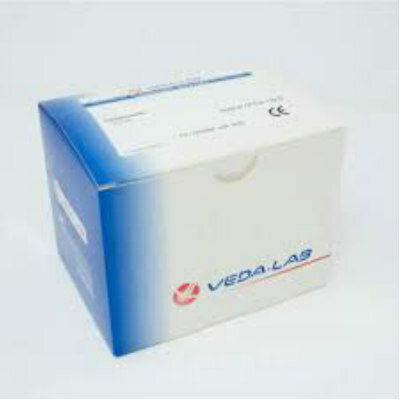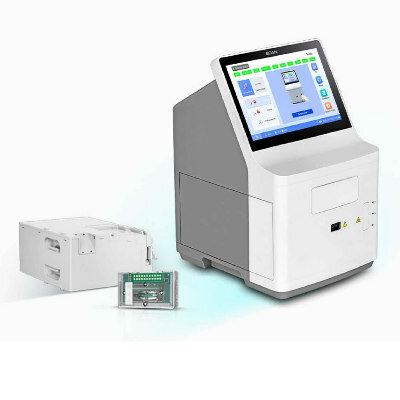Kidney Function Decline Linked with Inflammatory Marker Levels
|
By LabMedica International staff writers Posted on 15 Oct 2018 |
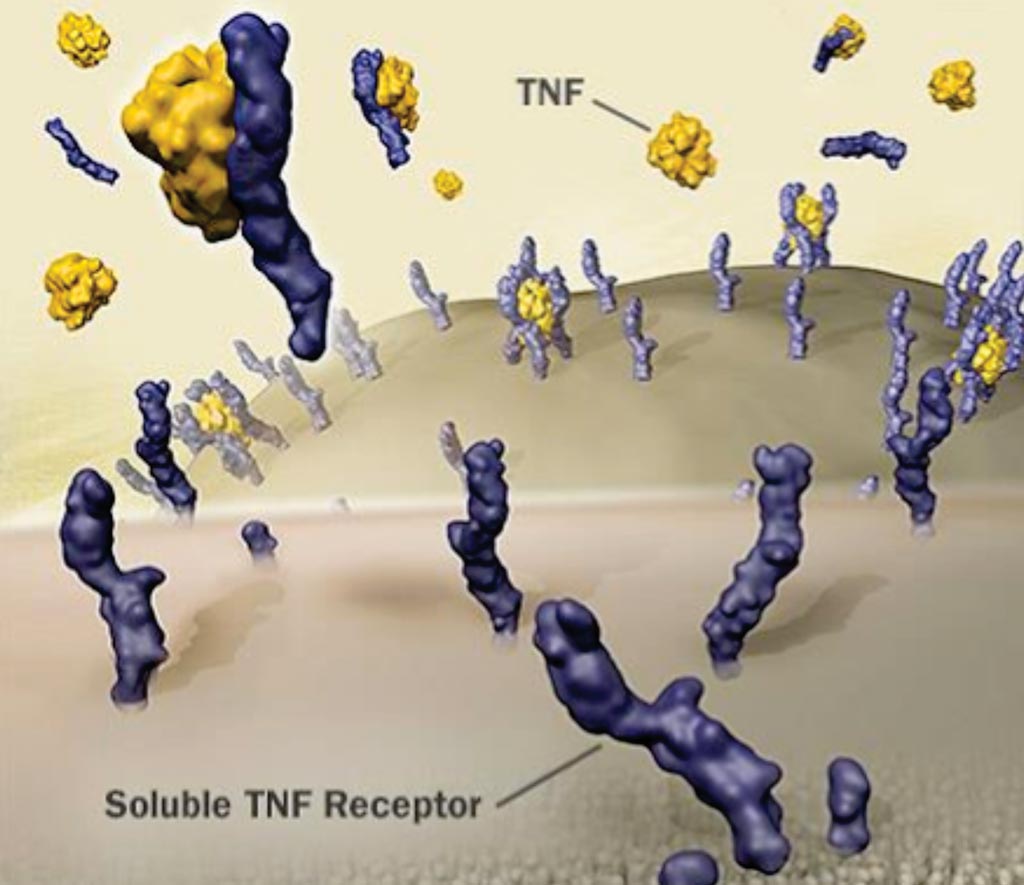
Image: Higher levels of the inflammatory biomarker soluble tumor necrosis factor receptor-1 (sTNFR-1) are tied to kidney decline in healthy adults (Photo courtesy of Enbrel).
Tumor necrosis factor receptor-1 (TNFR-1), which plays a causative role in endothelial cell dysfunction and inflammation, is expressed on the cell surface in glomerular and peritubular capillary endothelium of the kidneys.
Higher soluble TNF receptor-1 (sTNFR-1) concentrations are associated with kidney disease progression among persons with established diabetic kidney disease. Previous studies have demonstrated that blood levels of sTNFR-1 are linked with kidney disease progression in individuals with established kidney disease.
Scientists at the University of Washington School of Medicine (Seattle, WA, USA) and their colleagues conducted a multi-ethnic study of 2,548 adults with an average age of 61 years and 51% were women. Study participants were generally free of known kidney or heart disease at the start of the study, when sTNFR-1 levels were measured. The team tested associations between baseline sTNFR-1 concentrations and 10-year decline in estimated glomerular filtration rate (eGFR: incident ≥40% decline and annual proportional decline). Serum creatinine concentrations were determined at enrollment and study years 3, 5, and 10.
The scientists reported that the mean baseline eGFR was 79 mL/min per 1.73 m2. Serum sTNFR-1 was inversely associated with baseline eGFR. Over median follow-up of 9.3 years, 110 participants developed ≥40% decline in eGFR; each SD higher concentration of sTNFR1 was associated with higher risk of 40% eGFR decline (adjusted hazard ratio, 1.43; 95% confidence interval [95% CI], 1.16 to 1.77). The highest sTNFR-1 tertile was associated with adjusted annualized decline in eGFR of 1.94% (95% CI, 1.79 to 2.09). Associations persisted across subgroups defined by demographics, hypertension, diabetes, and baseline CKD status.
The authors concluded that elevated serum sTNFR-1 concentrations are associated with faster declines in eGFR over the course of a decade in a multiethnic population, independent of previously known risk factors for kidney disease progression. sTNFR-1 was associated with substantial differences in kidney function decline over time. Rates of decline over 10 years were nearly 4-times higher among people in the highest versus lowest sTNFR-1 categories. This association was independent of previously known risk factors for kidney disease progression and persisted across multiple sub-groups of participants.
Pavan K. Bhatraju, MD, MSc, the lead author of the study, said, “Many people continue to progressively lose kidney function despite treatment with current medications. New treatments are urgently needed to help prevent or slow the loss of kidney function. Our studies identify a novel marker that is strongly related to kidney function decline over time in a large multi-ethnic cohort and suggest follow up studies are warranted to investigate the potential role of sTNFR-1 in the development of kidney function decline.” The study was published on October 4, 2018, in the Journal of the American Society of Nephrology.
Related Links:
University of Washington School of Medicine
Higher soluble TNF receptor-1 (sTNFR-1) concentrations are associated with kidney disease progression among persons with established diabetic kidney disease. Previous studies have demonstrated that blood levels of sTNFR-1 are linked with kidney disease progression in individuals with established kidney disease.
Scientists at the University of Washington School of Medicine (Seattle, WA, USA) and their colleagues conducted a multi-ethnic study of 2,548 adults with an average age of 61 years and 51% were women. Study participants were generally free of known kidney or heart disease at the start of the study, when sTNFR-1 levels were measured. The team tested associations between baseline sTNFR-1 concentrations and 10-year decline in estimated glomerular filtration rate (eGFR: incident ≥40% decline and annual proportional decline). Serum creatinine concentrations were determined at enrollment and study years 3, 5, and 10.
The scientists reported that the mean baseline eGFR was 79 mL/min per 1.73 m2. Serum sTNFR-1 was inversely associated with baseline eGFR. Over median follow-up of 9.3 years, 110 participants developed ≥40% decline in eGFR; each SD higher concentration of sTNFR1 was associated with higher risk of 40% eGFR decline (adjusted hazard ratio, 1.43; 95% confidence interval [95% CI], 1.16 to 1.77). The highest sTNFR-1 tertile was associated with adjusted annualized decline in eGFR of 1.94% (95% CI, 1.79 to 2.09). Associations persisted across subgroups defined by demographics, hypertension, diabetes, and baseline CKD status.
The authors concluded that elevated serum sTNFR-1 concentrations are associated with faster declines in eGFR over the course of a decade in a multiethnic population, independent of previously known risk factors for kidney disease progression. sTNFR-1 was associated with substantial differences in kidney function decline over time. Rates of decline over 10 years were nearly 4-times higher among people in the highest versus lowest sTNFR-1 categories. This association was independent of previously known risk factors for kidney disease progression and persisted across multiple sub-groups of participants.
Pavan K. Bhatraju, MD, MSc, the lead author of the study, said, “Many people continue to progressively lose kidney function despite treatment with current medications. New treatments are urgently needed to help prevent or slow the loss of kidney function. Our studies identify a novel marker that is strongly related to kidney function decline over time in a large multi-ethnic cohort and suggest follow up studies are warranted to investigate the potential role of sTNFR-1 in the development of kidney function decline.” The study was published on October 4, 2018, in the Journal of the American Society of Nephrology.
Related Links:
University of Washington School of Medicine
Latest Clinical Chem. News
- AI-Powered Blood Test Accurately Detects Ovarian Cancer
- Automated Decentralized cfDNA NGS Assay Identifies Alterations in Advanced Solid Tumors
- Mass Spectrometry Detects Bacteria Without Time-Consuming Isolation and Multiplication
- First Comprehensive Syphilis Test to Definitively Diagnose Active Infection In 10 Minutes
- Mass Spectrometry-Based Monitoring Technique to Predict and Identify Early Myeloma Relapse
- ‘Brilliantly Luminous’ Nanoscale Chemical Tool to Improve Disease Detection
- Low-Cost Portable Screening Test to Transform Kidney Disease Detection
- New Method Uses Pulsed Infrared Light to Find Cancer's 'Fingerprints' In Blood Plasma
- Carbon Nanotubes Help Build Highly Accurate Sensors for Continuous Health Monitoring
- Paper-Based Device Boosts HIV Test Accuracy from Dried Blood Samples
- AI-Powered Raman Spectroscopy Method Enables Rapid Drug Detection in Blood
- Novel LC-MS/MS Assay Detects Low Creatinine in Sweat and Saliva
- Biosensing Technology Breakthrough Paves Way for New Methods of Early Disease Detection
- New Saliva Test Rapidly Identifies Paracetamol Overdose
- POC Saliva Testing Device Predicts Heart Failure in 15 Minutes

- Screening Tool Detects Multiple Health Conditions from Single Blood Drop
Channels
Molecular Diagnostics
view channel
POC Diagnostic Platform Combines Immunoassay and Molecular Testing
An innovative diagnostic platform offers superior sensitivity across all sample types, including blood, compared to existing rapid tests, while maintaining a low-cost, user-friendly design.... Read more
Single Blood Test Could Detect Different Types of Cancer at Early Stages
Currently, reliable screening for only a few types of cancer is available, such as those affecting the breast, bowel, cervix (neck of the womb), and lung for individuals at high risk. While these screenings... Read moreHematology
view channel
First Point-of-Care Heparin Monitoring Test Provides Results in Under 15 Minutes
Heparin dosing requires careful management to avoid both bleeding and clotting complications. In high-risk situations like extracorporeal membrane oxygenation (ECMO), mortality rates can reach about 50%,... Read more
New Scoring System Predicts Risk of Developing Cancer from Common Blood Disorder
Clonal cytopenia of undetermined significance (CCUS) is a blood disorder commonly found in older adults, characterized by mutations in blood cells and a low blood count, but without any obvious cause or... Read moreImmunology
view channel
Stem Cell Test Predicts Treatment Outcome for Patients with Platinum-Resistant Ovarian Cancer
Epithelial ovarian cancer frequently responds to chemotherapy initially, but eventually, the tumor develops resistance to the therapy, leading to regrowth. This resistance is partially due to the activation... Read more
Machine Learning-Enabled Blood Test Predicts Immunotherapy Response in Lymphoma Patients
Chimeric antigen receptor (CAR) T-cell therapy has emerged as one of the most promising recent developments in the treatment of blood cancers. However, over half of non-Hodgkin lymphoma (NHL) patients... Read moreMicrobiology
view channel
New Blood Test Detects Up to Five Infectious Diseases at POC
Researchers have developed a prototype flow-through assay capable of detecting up to five different infections, with results that can be quickly analyzed and transmitted via a specialized smartphone app.... Read more
Molecular Stool Test Shows Potential for Diagnosing TB in Adults with HIV
Tuberculosis (TB), caused by the bacterium Mycobacterium tuberculosis, led to 1.25 million deaths in 2023, with 13% of those occurring in people living with HIV. The current primary diagnostic method for... Read morePathology
view channel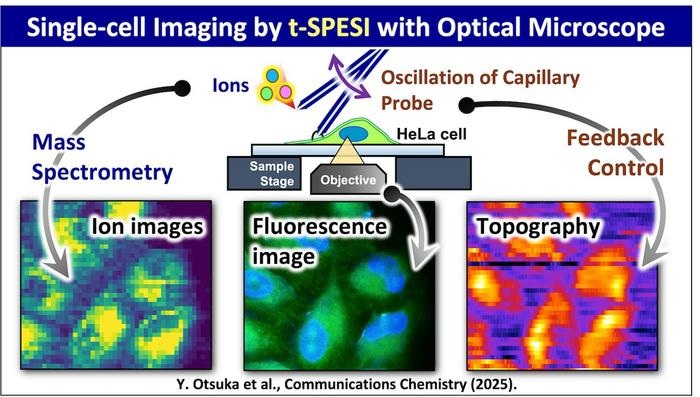
New Technology Improves Understanding of Complex Biological Samples
Tissues are composed of a complex mixture of various cell types, which complicates our understanding of their biological roles and the study of diseases. Now, a multi-institutional team of researchers... Read more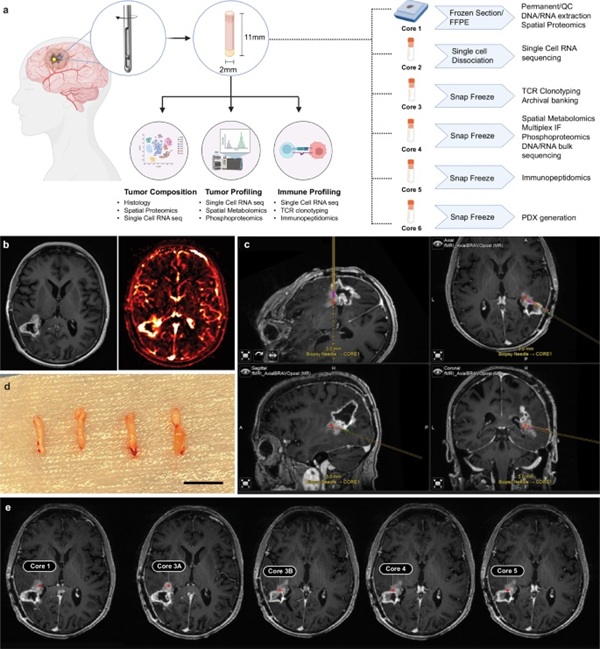
Combining Multiple Laboratory Techniques Provides Deeper Insights into Deadly Brain Tumors
Glioblastoma (GBM) is a highly aggressive primary brain cancer that currently has limited effective treatments. Stereotactic needle biopsies are commonly employed for diagnosis; however, their use is restricted... Read more
AI-Based Diagnosis System Identifies Malaria Parasites from Blood Smear Images
Malaria diagnosis has traditionally been performed manually via microscopic examination, a process that is not only time-consuming but also highly dependent on the expertise and accuracy of healthcare providers.... Read moreTechnology
view channel
Advanced Predictive Algorithms Identify Patients Having Undiagnosed Cancer
Two newly developed advanced predictive algorithms leverage a person’s health conditions and basic blood test results to accurately predict the likelihood of having an undiagnosed cancer, including ch... Read more
Light Signature Algorithm to Enable Faster and More Precise Medical Diagnoses
Every material or molecule interacts with light in a unique way, creating a distinct pattern, much like a fingerprint. Optical spectroscopy, which involves shining a laser on a material and observing how... Read more
Disposable Microchip Technology Could Selectively Detect HIV in Whole Blood Samples
As of the end of 2023, approximately 40 million people globally were living with HIV, and around 630,000 individuals died from AIDS-related illnesses that same year. Despite a substantial decline in deaths... Read more
Pain-On-A-Chip Microfluidic Device Determines Types of Chronic Pain from Blood Samples
Chronic pain is a widespread condition that remains difficult to manage, and existing clinical methods for its treatment rely largely on self-reporting, which can be subjective and especially problematic... Read moreIndustry
view channel
Qiagen Acquires NGS Analysis Software Company Genoox
QIAGEN (Venlo, the Netherlands) has signed a definitive agreement to acquire Genoox (Tel Aviv, Israel), a provider of artificial intelligence (AI)-powered software that enables clinical labs to scale and... Read more
Cepheid and Oxford Nanopore Technologies Partner on Advancing Automated Sequencing-Based Solutions
Cepheid (Sunnyvale, CA, USA), a leading molecular diagnostics company, and Oxford Nanopore Technologies (Oxford, UK), the company behind a new generation of sequencing-based molecular analysis technologies,... Read more
Grifols and Tecan’s IBL Collaborate on Advanced Biomarker Panels
Grifols (Barcelona, Spain), one of the world’s leading producers of plasma-derived medicines and innovative diagnostic solutions, is expanding its offer in clinical diagnostics through a strategic partnership... Read more




